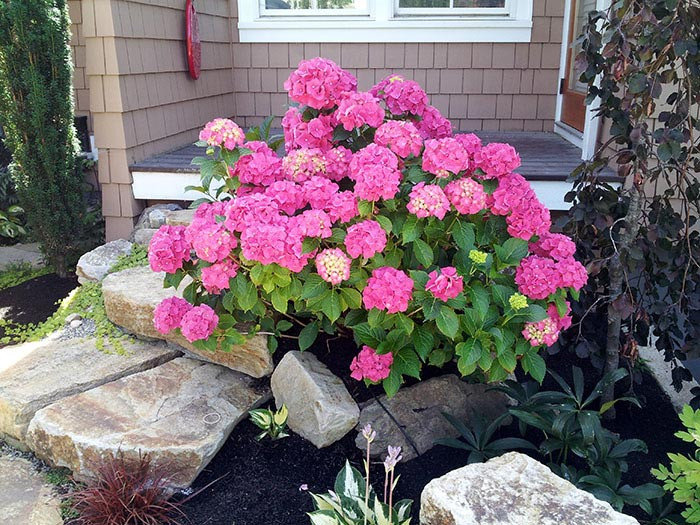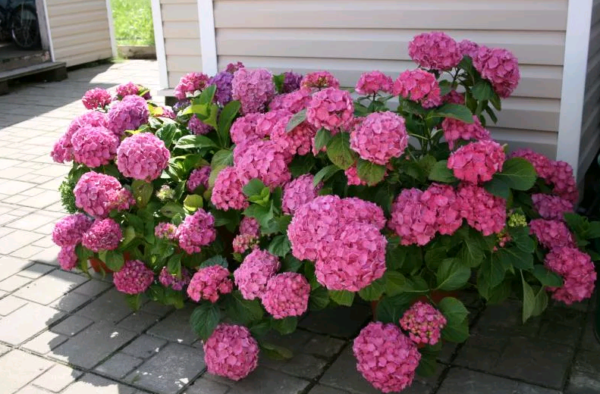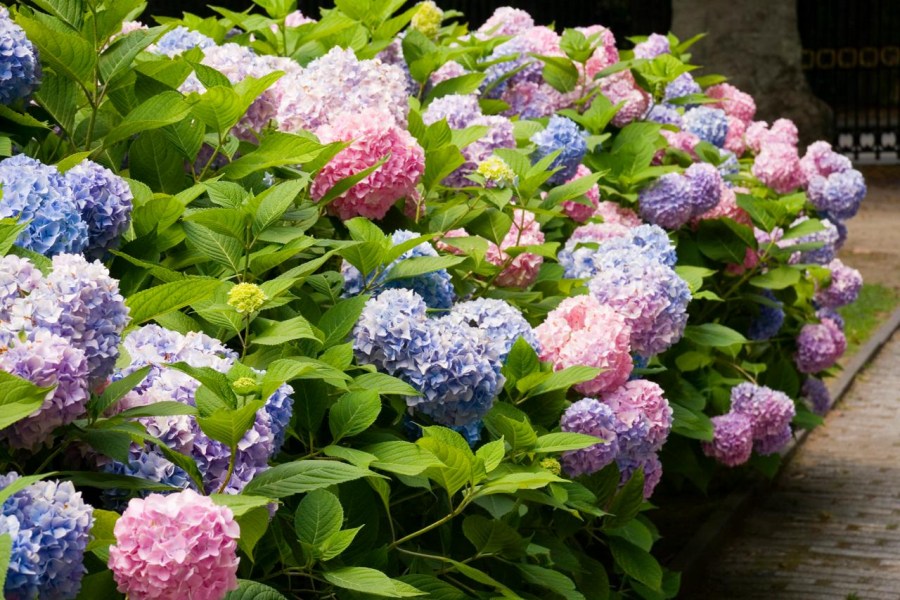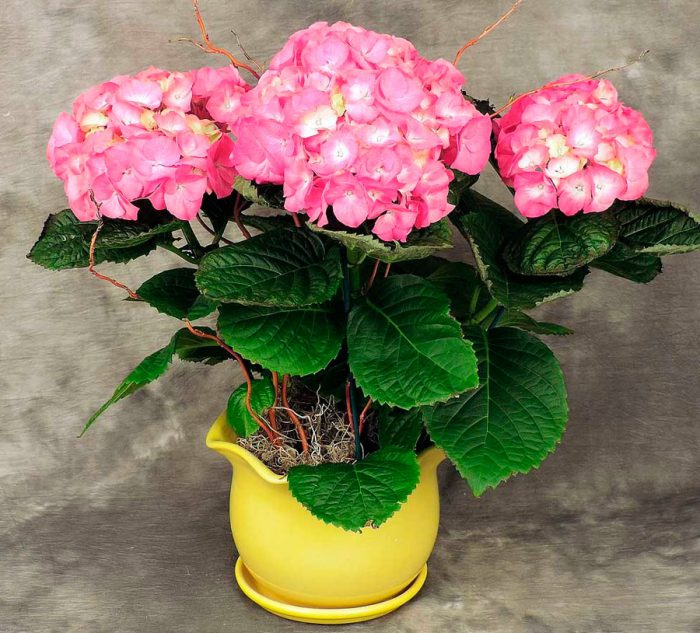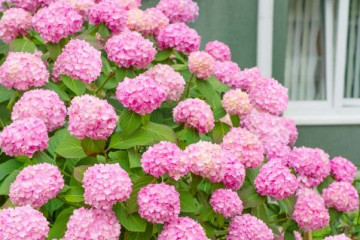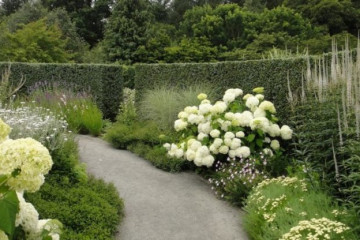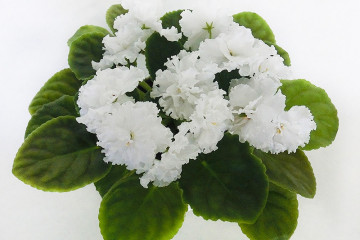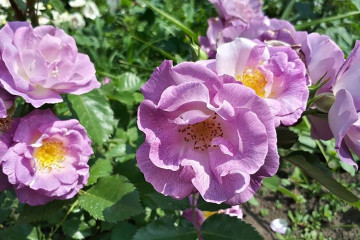Hydrangea Bouquet Rose large-leaf
Content:
Hydrangea on personal plots and dachas could be found quite often as far back as the nineteenth century. Nowadays, this undeservedly forgotten plant is gradually gaining more and more popularity. And this is quite justified: a chic flowering shrub can become the main decoration of any garden. In addition, thanks to the tireless work of modern breeders, a large number of various varieties of all kinds of colors and sizes have been bred.
Hydrangea Bouquet Rose large-leaved: appearance and history of origin
Large-leaved hydrangea spread throughout Europe from France, where, in turn, it was introduced more than two centuries ago from China. An unknown shrub with balls of delicate flowers of various shades was named after the sister of the French prince of Nassau-Siegen, the beautiful Hortense.
One of the most picturesque varieties of large-leaved hydrangea is the Rose Bouquet hydrangea. The plant is a deciduous shrub resembling a ball in shape, with a height and width of about 1-1.3 m (in the case of growing a plant in containers, the dimensions are significantly reduced, amounting to about 0.5-0.6 m). Hydrangea leaves are large, opposite, oblong, ovoid. The upper surface of the leaf is a rich green color, slightly rough, the lower one is more velvety.
The color is rather large, collected in globular inflorescences with a diameter of about 25-30 cm, flowers vary from white to various shades, from pink to lilac and from pale blue to purple. The color depends on the acidity of the soil in which the plant grows: Bouquet Rose hydrangea (Early Rose hydrangea) acquires blue tints of color with increased acidity due to the ability to accumulate aluminum and form chemical compounds with it, and lilac and beige shades are the result of exposure to alkaline soils.
For the purpose of coloring the flowers of a plant, you can use peat, which is either introduced into the soil and used as mulch, or dissolved in water and the resulting solution is used for irrigation.
Also, some gardeners use special dyes sold in flower shops. And some of them use rusty nails that are inserted into the soil at the roots of the plant.
Hydrangea Blossom Bouquet Rose
Large-leaved hydrangea Rose bouquet blooms very colorfully and for a long time (the average flowering period of the shrub lasts from June to September). The bush is completely covered with colorful large balls of delicate shades, so it is not surprising that many gardeners who grow hydrangea on their plots rightfully consider it their pride. Inflorescences appear at the ends of the shoots a few years after planting.
Basic transplant rules
- a place. For planting roses, hydrangeas, a half-shaded place is best suited. You can also plant a shrub in the shade and in more open areas, but it is still better to avoid places that are too sunny, where the plant will be exposed to direct sunlight for a long time;
- priming. Beautiful hydrangea Bouquet of Roses, as it is also called in a simple way, prefers nutrient soils with an acidic or slightly acidic reaction. The most important condition for the soil is good drainage. With an excess of nitrogen in the soil, the plant will experience lignification, and the bush will bloom much worse. And in calcareous soils, the shrub will not grow at all;
- terms. It is possible to plant young shrubs in open ground in the spring only when stable heat and soil warming up sufficiently, since unexpected night frosts can destroy a young fragile root system;
- transplant process. For the transplanted plant, pits are prepared that correspond in size to its root system, since the roots should be free to position. Then a layer of drainage material must be added to the pit, which will prevent moisture stagnation in the root system. If several plants are planted at once, then the distance between them should not be less than 1 m.
When planting seedlings, do not burrow the root collar of the plant too deep into the ground.
Reproduction methods
- Cuttings. Cuttings cut in the fall are rooted indoors in specially prepared soil throughout the winter, and in the spring, when the heat comes, they are planted in open soil.
- Layers. They are obtained by dropping shoots near the mother plant (the tip of the shoot should be above the ground). For a greater guarantee of rooting, the middle of the shoot, which will be under a layer of soil, is scratched and treated with a root, this will speed up the process of root formation. Only after the formation of a well-developed root system can young plants be separated and transplanted to a permanent place of growth.
- Growing from seeds. Seeds are planted in pots, provide them with warmth and timely watering, dive and plant if necessary. Only in the third year, the seedlings can be transplanted into open ground.
Hydrangea Coquin Rose: planting and care
In leaving, you should follow simple rules.
- Watering. Hydrangea loves abundant watering, but during flowering it should be reduced, avoiding stagnation of water in the roots of the plant. It is also highly undesirable for water to enter the inflorescences, this can cause stains on them.
- Fertilizer. Feeding hydrangeas is important to extend the flowering period. It is better to feed the plant with the help of mineral fertilizers, and their composition should be selected in accordance with the characteristics of the variety (for example, for plants with blue and blue flowers, potassium should prevail in the fertilizer, but phosphorus should be less). It is important to fertilize at the beginning of spring, when the plant is actively growing, then at the beginning of summer, when buds are forming, and at the end of summer, when there is an active laying of new buds for future flowering.
- Leaving during the flowering period. The description of the basic rule for caring for hydrangea during flowering is timely and sufficient watering, but at the same time, water stagnation should not be allowed.
- Leaving during the rest period. For hydrangea growing in indoor conditions, a dormant period must be provided in winter. To do this, the temperature in the room should not be higher than 7-8 ° C (a basement is ideal), watering is carried out occasionally and not too abundant. At the end of winter, when the kidneys are activated, the hydrangea is transferred to a warm room.
- Preparing hydrangeas for wintering. Hydrangea Bouquet Rose is characterized by not too high winter hardiness. The plant will be able to normally withstand not very long frosts up to 15-18 ° C, otherwise there is a risk of losing it. Therefore, if during mild winters in warm climates the plant does not need additional shelter, then with more severe winters with prolonged low temperatures, it is better to cover the hydrangea. To do this, before the onset of cold weather, the bush is huddled, adding soil to the base. The shoots of the plant are fixed on the ground (some gardeners use ordinary wooden boxes for these purposes, passing branches through them), and from above they use a covering material (polyethylene, lutrasil), which is well fixed to avoid opening during strong gusts of wind.
Hydrangea is a colorful flowering shrub that, thanks to its long flowering period, can decorate any garden or site. The plant prefers partial shade and acidic soil, and the color of the inflorescences depends on the level of acidity. Frost resistance in different plant varieties is slightly different, but if winters do not differ in severe frosts, then it is quite possible to do without additional covering of branches for the winter. Hydrangea is an unpretentious shrub to care for, which, with minimal labor, will reward with lush flowering.
